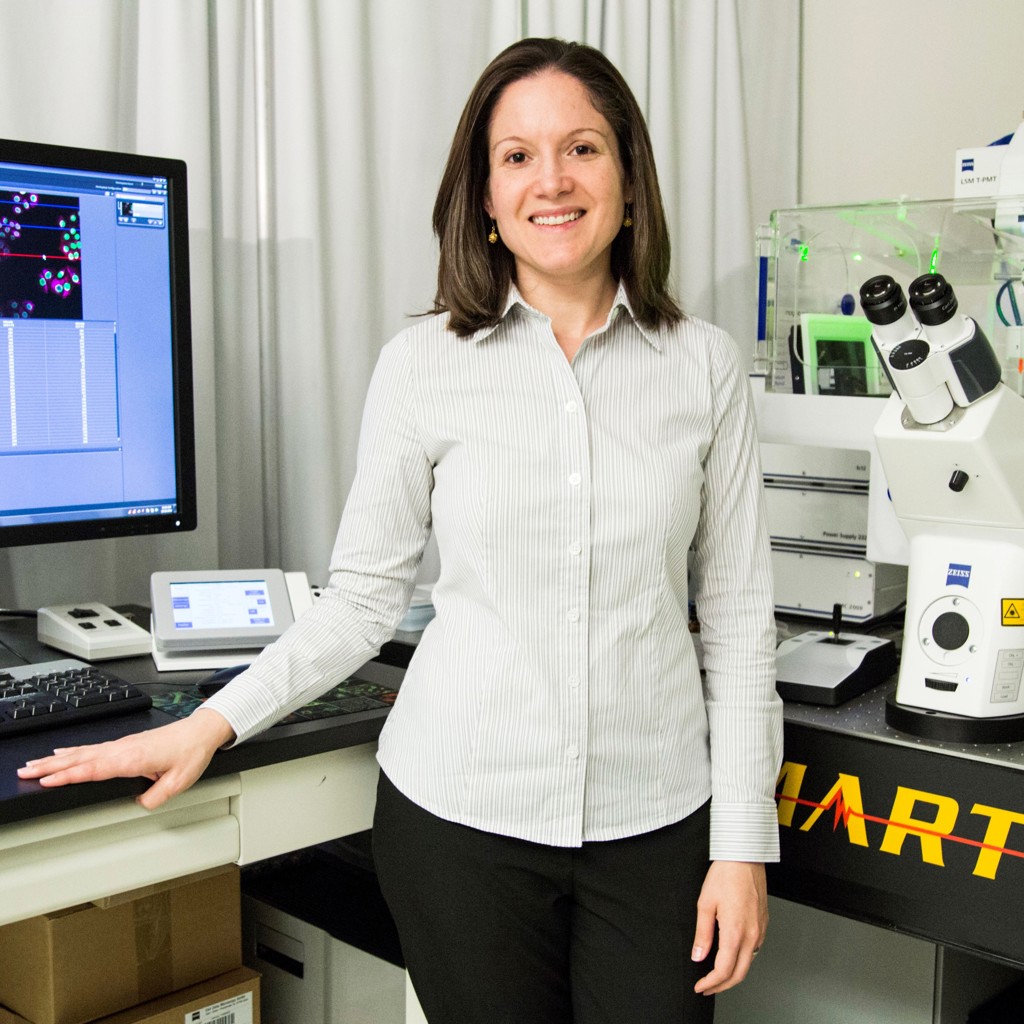Andrea Armani
University of Southern California, United StatesFor contributions to integrated photonics with applications in telecommunication and chemical and biological detection.

Andrea Armani had not originally considered graduate school as an option. She knew she loved physics and pursued the field for her undergraduate degree, but it was not until late in her undergraduate career that it was suggested she pursue physics further. David Grier, now at New York University, and Ward Lopes, now at Nvidia, encouraged her to continue on to graduate education. And it was only when she served as a teaching assistant and mentor for undergraduate students that she knew academia was the right path for her.
Andrea credits mentorship as crucial to her success. She says that there are three ways to learn: by trying and failing yourself, by following the example of successful people, or by talking with successful people. She believes that talking with successful people is the most valuable because it often reveals that the path to their success may not have been the obvious one. For example, when Andrea started talking to others, she learned that obtaining high-level, sought-after grants did not happen on the first try and that persistence was necessary for success. She notes that researchers only list the grants they have received, not the number submitted. She counsels other scientists to persevere and remember that failing to get one grant doesn’t mean you won’t get the next.
She observes that having mentors for the different aspects of your professional career and development is critical and recommends seeking a variety of mentors. Andrea credits past OSA President Alan Willner for his role in helping her look at the big picture of her career trajectory and pointing out the importance of volunteer service.
She also stresses the importance of having mentors outside your own institution to provide a different perspective in the same way that it can be useful to attend different institutions for undergraduate and graduate studies.
Fellow Diana Huffaker, now Professor of Electrical and Computer Engineering at the University of California, Los Angeles, provided valuable advice on aspects of the job search not taught in graduate school, such as understanding benefits and start-up packages, and the insight to select an institution that best suits you as a person. Diana’s timely advice helped Andrea to begin her career at the University of Southern California where she is currently the Irani Professor in the Viterbi School of Engineering.
In addition to having mentors, collaboration has been an important part of Andrea’s career. As she advanced, her network grew and her methods for finding collaborators changed. In the beginning, she relied on people she already knew. However, she broadened her network with activities like OSA’s traveling lecturer program. Visiting other institutions to give workshops and talks led to meeting other professors and students in the field. These connections later led to collaborations and a greater network of people to contact when the next project came up. Recently, a grant solicitation for a plant-based biosensor led to an unexpected collaboration with a plant researcher on USC’s health science campus. Andrea advises those looking to collaborate to “be proactive” and build their networks. Collaboration evolves as your network grows. She adds that you should not assume people are going to call you. Everyone is busy. If you see an opportunity, go for it.
In addition to the traveling lecturer program, social media is becoming increasingly important in student recruitment, collaboration, and success promotion. When Andrea first started out on social media, Fellow Naomi Halas, Professor of Electrical and Computer Engineering at Rice University, suggested the “ratio of 3’s formula.” One-third of tweets are personal, one-third are professional, such as recent awards and papers, and one-third are group promotions and successes. As an engineer, Andrea likes formulas so this strategy worked well for her. Her group is on Twitter, Facebook, and Instagram and her students also post to Twitter and Facebook accounts. This helps to publicize the group’s research as well as highlight their internal dynamic to potential students. Many new PhD students said they applied to the group because they liked the environment as well as the research. Social media has helped Andrea to collaborate, build networks, and attain success in her research. Her advice for anyone looking to start using social media for their labs is to “just dive in.”
Andrea attributes her success to having a strong support system. “While faculty always appear on the podium alone, their success is definitely a team effort—both of their research group and their family. In my case, I’m particularly fortunate to have a wonderful husband who is also an engineer and truly understands everything I do” she says.
To find out more about Andrea and her research, visit her lab’s lab’s website. You can also follow the lab on Twitter and Instagram @armanilab.
Photo credit: USC Viterbi School of Engineering
